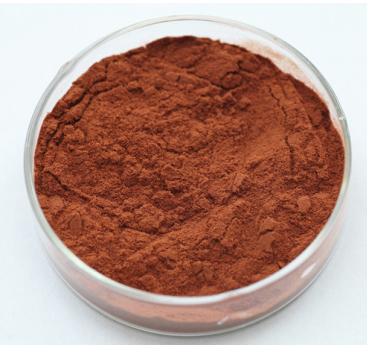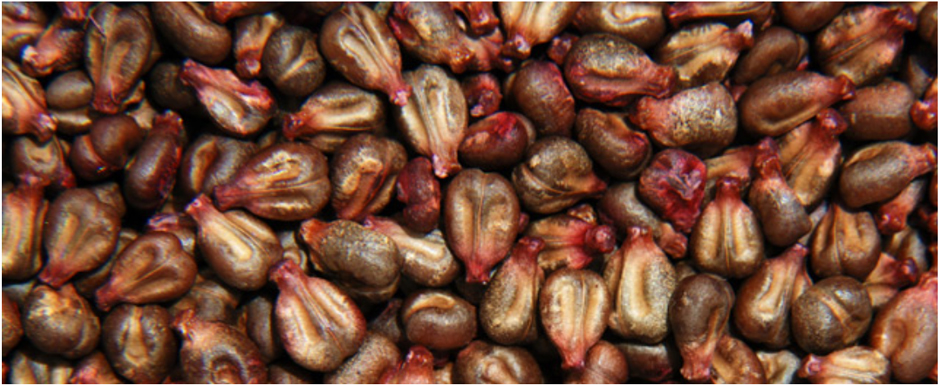Goods high definition for Grape seed extract Guinea
Goods high definition for Grape seed extract Guinea Detail:
[Latin Name] Vitis vinifera Linn
[Plant Source] Grape seed from Europe
[Specifications] 95%OPCs;45-90% polyphenols
[Appearance] Red brown powder
[Plant Part Used]: seed
[Particle size] 80 Mesh
[Loss on drying] ≤5.0%
[Heavy Metal] ≤10PPM
[Pesticide residue] EC396-2005, USP 34, EP 8.0, FDA
[Storage] Store in cool & dry area, keep away from the direct light and heat.
[Shelf life] 24 Months
[Package] Packed in paper-drums and two plastic-bags inside.
[Gerneral feature]
- Our product has passed the ID test by ChromaDex, Alkemist Lab. and other
third-party authoritative testing institutions, such as detection;
2. The pesticide residues match (EC) No 396/2005 USP34, EP8.0, FDA and other foreign pharmacopoeia standards and regulations;
3. The heavy metals in strict accordance with the foreign pharmacopoeia standard controls, such as USP34, EP8.0, FDA, etc.;
4. Our company set up a branch and import raw materials directly from Europe with strict control of heavy metal and pesticide residue. Aslo ensure the procyanidins content in grape seed is more than 8.0%.
5. OPCs over 95%, polyphenol over 70%, high activity, the oxidation resistance is strong, the ORAC more than 11000.
[Function]
Grapes (Vitis vinifera) have been heralded for their medicinal and nutritional value for thousands of years. Egyptians ate grapes a very long time back, and several ancient Greek philosophers spoke about the healing power of grapes — usually in the form of wine. European folk healers made an ointment from the sap of grapevines to treat skin and eye diseases. Grape leaves were used to stop bleeding, inflammation, and pain, such as the kind brought on by hemorrhoids. Unripe grapes were used to treat sore throats, and dried grapes (raisins) were used for constipation and thirst. Round, ripe, sweet grapes were used to treat a range of health problems including cancer, cholera, smallpox, nausea, eye infections, and skin, kidney, and liver diseases.
Grape seed extracts are industrial derivatives from whole grape seeds that have a great concentration of vitamin E, flavonoids, linoleic acid and phenolic OPCs. The typical commercial opportunity of extracting grape seed constituents has been for chemicals known as polyphenols having antioxidant activity in vitro.
Product detail pictures:

Related Product Guide:
We can always satisfy our respected customers with our good quality, good price and good service due to we are more professional and more hard-working and do it in cost-effective way for Goods high definition for Grape seed extract Guinea , The product will supply to all over the world, such as: Nepal, Cologne, Luxembourg, We also have the strong ability of integration to supply our best service, and plan to build the warehouse in the different countries around the world, that will be more conveniently to service our customers.
https://biovea.com
*Increase erectile function and improve endurance
*Increases size and firmness of erections
*Boosts sex drive
*Promotes blood circulation
*Improves stamina
*Supports male hormone balance
*Promotes powerful, intense orgasm
การทดสอบประสิทธิภาพการทำงานของ “มะโฮ” เบต้ากลูแคน (Bata Glucan) จากยีสต์ดำ โดยจะนำน้ำสนิมของตะปูซึ่งมีลักษณะขุ่นมากๆมาเทลงบนแก้วน้ำ 2 ใบ ซึ่งน้ำสนิมของตะปูที่ขุ่นๆนี้จะเปรียบเสมือนกับเศษอาหารหรือกากของเสียต่างๆที่ติดอยู่ตามผนังลำไส้ของคนเรา จากนั้นก็หยด เบต้ากลูแคน ลงในแก้วใบแรกเท่านั้น ส่วนแก้วอีกใบไม่หยดอะไรลงไป แล้วก็ให้คนแก้วน้ำใบที่หยด เบต้ากลูแคน ให้ทั่วทั้งแก้วเพื่อให้เบต้ากลูแคนละลายในแก้วน้ำได้ดียิ่งขึ้น
หยดสารทดสอบซึ่งทำหน้าที่เสมือนกับกรดน้ำย่อยในกระเพาะอาหารและลำไส้ของเราลงไปในแก้วน้ำทั้ง 2 ใบคนสารทดสอบให้ทั่วแล้วสังเกตการเปลี่ยนแปลง
จะเห็นได้ว่าแก้วน้ำสนิมตะปูใบที่หยด เบต้ากลูแคน (Bata Glucan) ลงไปนั้นหลังจากที่หยดสารทดสอบลงไปจะทำให้น้ำสนิมตะปูที่ขุ่นๆกลับมาใสขึ้นอย่างมากเมื่อเทียบกับแก้วน้ำสนิมตะปูใบที่หยดสารทดสอบเพียงอย่างเดียวแต่ไม่ได้หยด เบต้ากลูแคน ลงไป
https://maho-bata-glucan.blogspot.com/
This company has the idea of "better quality, lower processing costs, prices are more reasonable", so they have competitive product quality and price, that's the main reason we chose to cooperate.






